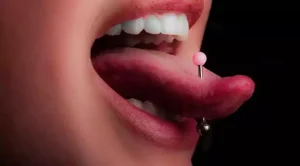Reasons you should not get piercings on these 9 body parts

While it can be a safe and enjoyable practice when performed by a professional in a clean environment, some piercing locations carry risks and potential dangers.
It is essential to be aware of these risks before getting a piercing in certain areas of the body. Here are some areas that can be potentially dangerous to pierce:
1. Genital piercings
Piercings in the genital area can pose risks such as infections, nerve damage, and discomfort during physical activities.
These piercings also require meticulous aftercare due to their location and proximity to bacteria.
2. Oral piercings
Tongue, lip, and cheek piercings can interfere with oral health. They may lead to chipped teeth, gum damage, and increased risk of infection. Swelling and difficulty speaking or eating can also occur, particularly in the initial stages.
3. Nipple piercings
Nipple piercings can lead to complications such as keloid scarring, infections, and interference with breastfeeding in the future. The delicate tissue in the area can also be slow to heal.
4. Surface piercings
Areas such as the nape of the neck, sternum, and hip can be prone to rejection or migration because they are subject to movement and irritation. These piercings require extra care and attention to avoid complications.
5. Dermal piercings
Dermal piercings are placed on flat areas of the skin, such as the chest or back. These piercings carry the risk of migration, rejection, or infection due to their placement and the nature of the piercing.
6. Cartilage piercings
Piercings on the upper ear or other cartilage areas can take a long time to heal and are more prone to infections due to limited blood flow in the cartilage. Keloid formation is also a possibility.
7. Bridge piercings
The bridge of the nose is a delicate area where piercing can lead to infection, scarring, or migration. There’s also a risk of affecting the sinuses due to the proximity of the piercing to this area.
8. Navel piercings
While navel piercings are popular, they can be prone to infection and migration, especially if clothing or other objects rub against the piercing. Proper care is essential for successful healing.
9. Conch piercings
Conch piercings, which are located in the inner part of the ear, can be prone to infection and slow healing due to limited blood supply. Proper aftercare is crucial for these piercings.
Before getting any piercing, it is important to thoroughly research the risks and find a reputable, licensed piercer. Proper aftercare, including regular cleaning and avoiding irritants, is essential to minimize the risk of complications.




